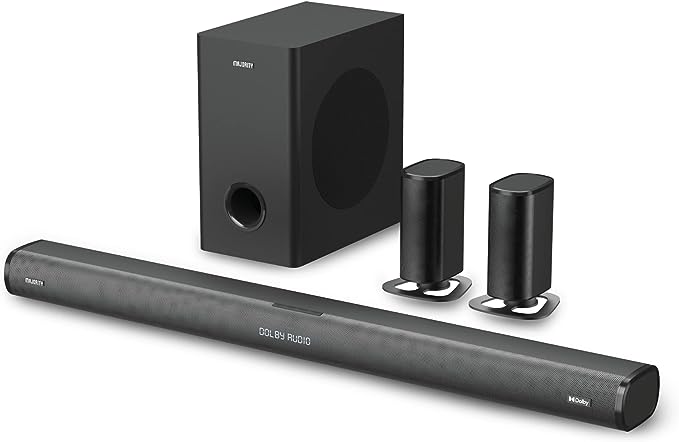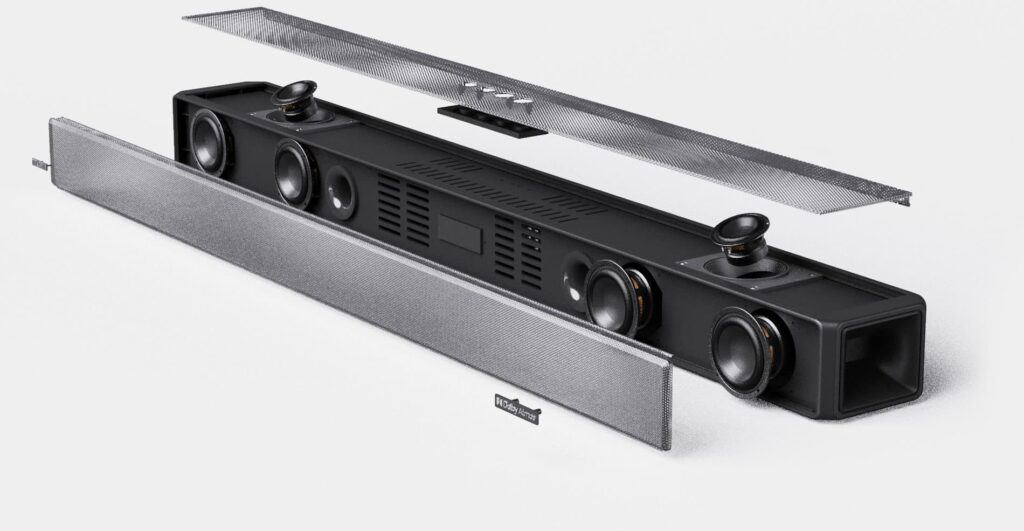Founded by two friends. Eddie Latham, and PJ Scott. from Cambridge in 2012, Majority has gone on to become an Amazon best-selling brand with a device in over three million homes across the globe. Again, unusual for AV News, Majority’s combination of ground-breaking technology and affordable prices has come into its own with more people working from home.
From its origins in Cambridge, the founders have developed solutions on a suite of bang-up-to-date technology platforms and ancillary features. Even the user instructions are provided as digital videos which can be viewed on a smartphone, tablet or laptop. The company’s product range embraces more than 50 radios, speakers, soundbars, and DVD players, all of which are designed in Majority’s studio in Cambridge. The company has sold over 3 million units across the UK, Europe, and beyond, ensuring every aspect of the company is delivering superb customer support. The majority has grown from the founders to a team of over 40 with offices across the UK.
The majority has been credited with an astonishing number of innovations in its short history, including the world’s first Alexa-enabled DAB radio and price-point setting Dolby Atmos and surround sound implementations. From the Majority’s extensive product range, we chose two to review that would appeal to home-based workers who would want to enhance their ability to collaborate while also wanting to use their home office solutions for home entertainment by pairing it with a TV, projector, monitor, or music source. We chose the Majority Everest 5.1 surround system and the Majority Sierra Plus Dolby Atmos soundbar. The first point to note about both these products is the price – highly relevant when setting up a home office solution. The RRP of the Everest surround system is £229.95; the price of the Sierra Plus Dolby Atmos soundbar is also around £229 on Amazon.
Majority Everest 5.1 surround system
Like many home-based workers, our team uses laptops with the option of supplementary monitors to be used for collaborative team meetings through Zoom and MS Teams. While the meetings are hosted on a selection of Mac and Windows PC laptops, none can pretend that the sound quality is anything more than ‘adequate’. The option to add a low-cost surround system gave us the chance to enhance the audio quality and also to spatial differentiation of the meeting participants. The Everest 5.1 comes with a full Dolby surround sound system that includes a soundbar, wireless subwoofer, and a pair of detachable (rechargeable) satellite speakers.
Unpacking the surround sound solution revealed some compact, moulded plastic components which did little to convince the review panel of the system’s quality. But aesthetics aside, the features of the product more than compensate for these first impressions. The first thing that we found impressive was the setup via Bluetooth which is automatic and very fast. We linked the surround system to a Mac laptop for a collaborative Zoom meeting to help differentiate between the audio feeds from five meeting participants. Voice reproduction was very good and represented a considerable improvement on the audio from the laptop – and at a very modest cost.
Recognising that installing any kind of office kit in a domestic environment must have some social benefit for the homeowner, we also tried the Everest surround system with the direct antithesis of audio quality – an iPhone. Hearing Billie Eilish on Spotify through the Everest surround system was a different experience. The performance of the subwoofer in association with the soundbar and satellite speakers filled the room and reproduced the style of a complex mix. Setting the relative output values of the various system components was easy. One unexpected benefit of the rechargeable satellite speakers was being able to move them to a different room without interrupting the playback.
All-in-all, the Majority Everest 5.1 was effective for work and leisure applications, and, in terms of value, surround sound for less than £230 is a worthwhile complement to a WFH / entertainment solution at a bargain price. Bluetooth set-up was among the easiest we have encountered which is a real plus for the Majority Everest 5.1’s intended market.

Majority Sierra Plus Dolby Atmos soundbar
While the surround solution is understood by the majority of consumers, what would be the appeal of the similarly priced.
Sierra Plus Dolby Atmos soundbar solution? Dolby Atmos surround sound technology started life in post-production studios from where it has made its way into home cinema and domestic audio set-ups.
Atmos is, in Dolby’s own words, “the most significant development in cinema audio since surround sound.” And we’d have to agree, really (whilst also recognising that rival DTS:X – a similar object-based surround technology – is also widely used).
Atmos is a surround-sound technology that was first developed in 2012, expanding upon the pre-existing 5.1 and 7.1 surround-sound setups. Atmos adds sound channels coming from overhead, enveloping the audience in a dome of audio.
Where traditional surround sound systems, Dolby Atmos technology produces over 100 sound objects, allowing the sound designer to place each sound and voice to exact points within the sound fields. These objects can be manipulated and moved around within the space creating a 3D soundstage. Atmos sound objects can be reproduced by a simple pair of loudspeakers, often complemented by additional speaker modules on top of the usual front pair for stereo reproduction.
The key advantage offered by Majority’s Sierra Plus soundbar is that it delivers immersive sound from a smaller number of units when compared to orthodox surround systems. The Sierra Plus produces 2.1.2 channels of sound with Dolby Atmos decoding. Signals are directed to a pair of drivers and a port, with two more ports at either end of the soundbar. These are complemented by a pair of angled height drivers. For low-end reproduction, Meanwhile, the Sierra Plus sub has a 5.25-inch side-firing driver and front-facing port. The Sierra Plus has Bluetooth onboard for music streaming and hard-wired inputs for HDMI ARC, optical, mini-jack, and USB.
The top of the soundbar features buttons for basic functionality. We chose to use the remote control provided with the Sierra Plus, which gives access to playback functions and bass control for the sub, plus treble control and sound modes: movie, music, news, and 3D. As with the Everest surround solution, Bluetooth pairing is simple. Audio output is rich and the speaker configuration is well matched to speech and music content, although primary usage of the Sierra Plus we would see the primary applications in an AV environment being one-to-one video calls. gaming and applications where space is at a premium in experience centres.






